This past November David Palumbo asked “Can we talk about the rough year we’re having?” in a post. His concerns—AI, perceptions about the economy, social media, etc.—were thoughtfully raised and discussed, both in the essay and in the subsequent comments. I probably would have added the never-ending political turmoil (both here and abroad) to the list of things causing anxiety, but that’s just me. Anyway, as I was reading Dave’s post I remembered a scene in Tony Moorman’s excellent 2015 documentary Making It in which Jon Foster (and I’m paraphrasing here) says that his students always ask him when it—”it” meaning making meaningful art and having a career doing so—gets easier and Jon’s truthful response was, “Never. It never gets easier.”
Perhaps that’s one of the most important things artists, regardless of age, should always remember: It never gets easier.
That’s not to be or sound discouraging, but is only an acknowledgment that art, as a deeply human expression, is supposed to be hard. Tastes change, styles evolve, clients come and go, incomes go up and down, and technology will always create all sorts of distractions, concerns, and challenges. I’ve never known any artist (and I’ve known a lot), no matter how accomplished or popular they might be, who didn’t struggle and have difficulties at one point or another. But figuring out how to connect with an audience, how to communicate thoughts and feelings—how to question, how to find meaning in the mundane and wonder in the never-was—will always give the artist the opportunity to succeed and give them an edge, even when they’re competing against an algorithm that’s imitating their work.
Let’s not sugarcoat it: AI imaging will most certainly have a negative effect on commercial artists in one way or another. How much of an effect is impossible to know. As with all things AI—whether it’s creating a book cover or retouching an I-Phone photo or writing a term paper (or emails) or auto-tuning a mediocre singer or de-aging an actor or Siri answering questions or Alexa listening in and taking orders—it’s here and won’t go away no matter how angry or frustrated or worried it makes us. All technological advances throughout history have cost jobs; sure, tech creates jobs, too, but not necessarily for those whose careers are affected or damaged. We are seeing an evolution in the culture, just as we did when the internet first caught fire, just as we did when everyone suddenly had a computer (either on their desks or in their pockets)…and where we’re going is anyone’s guess.
And let’s be honest, AI will only get better; even as I write this the engineers and coders are steadily working on fixing the “tells” that make AI painfully obvious. All the AI “Stepford” Images will probably become harder to spot and increasingly confuse audiences; I admit I’ve been fooled more than once in the past year myself. At the same time others online have started seeing AI phantoms everywhere and in everything, including in artworks that were created years before AI was even invented. Confusion reigns.
Looking ahead pragmatically, it’ll take awhile before government regulations and the copyright laws can catch-up, if they ever do (there hasn’t been any legislation regarding the internet, software, or digital content passed in the U.S. for over 20 years). The general public will not care what impact AI might have on artists’ livelihoods (unless it affects a friend or family member), they’ll just be amazed by all the bland-but-pretty pictures that result from typing in a few words. The clueless who couldn’t compete with Congo (the painting chimpanzee during the 1950s) will call themselves “artists” because they can input a few prompts—and you’d better believe corporations will happily use AI instead of hiring illustrators to save a dollar in the coming months and years (if they aren’t using it already). As I was telling Greg Manchess recently, I was employed as an artist and art director by corporations for over 42 years and made them buttloads of money with my ideas and work, but I always knew that if they could’ve made a dime or saved a dime without me sitting at a drawing table they would have gladly shot my ass out of a cannon in a New York minute. It’s business and the buck, the pound, the Euro, or the yen—and how to make more for the owners or stockholders—are always what counts.
Do corporations care that the current model for AI imaging relied on using copyrighted works to train the software? Nope. Will the courts make the AI software companies pay for their hubris? I hope so, but who knows? But if they do have to pay…will it be enough to change their behavior? We’ll see. Can (and will) an AI program be developed that is ethical, moral, and non-infringing, one that is beneficial to living artists rather than competing with them? Boy, you’ve got me.
The Writer’s Guild of America and the Screen Actors Guild both were on strike for much of 2023 with one of the sticking points in the negotiations being the future use of AI by studios and producers; limitations and compensation were both parts of the final agreement. Most artists, whether illustrators or gallery artists, on the other hand are independent contractors without the backing and bargaining power of a guild or union; they’re pretty much on their own (unless they have an agent) when it comes to negotiating contracts or protecting their rights.
Since DALL-E was launched in early 2021, generative AI was reportedly producing more than two million images a day by late 2022—and, of course, DALL-E is only one player in the generative AI imaging game. By August 2023 the guesstimate was that 34 million images were being produced every single day by the existing generative AI tools (including DALL-E, Midjourney, Stable Diffusion) even as other companies, like Getty, Adobe, and Meta, gleefully began jumping into the mix to cash in on the perceived cash cow. Billions of images are sitting on hard-drives or floating around the internet. Billions, and counting.
Who knew that Pandora’s box was actually a computer? And who could have guessed that, once opened, the tech companies would turn it over and pound on the bottom to make sure that there weren’t any malingering Evils left behind to plague the world? (I mean, c’mon: just last week some clown used AI to create pornographic images of Taylor Swift which were seen and shared by 47 million people on Twitter/X before they were taken down; some other asshat—or group of asshats, more likely—created a Deep Fake robo phone call featuring an AI-generated voice message “from President Biden” urging people not to vote in the New Hampshire primary. And then there were the two Florida high school students who used an AI ap to create and circulate nudes of some of their classmates. “Evils”? You better believe they are.)
Look, photography had an impact on artists, society, and the marketplace. Stock art & photography houses had an impact on artists, photographers, and the marketplace. Desktop computers and digital drawing, painting, and sculpting tools had an impact on artists, society, and the marketplace. AI will have an impact on artists, society, and the marketplace.
But remember, too, what remained in Pandora’s box when it was almost empty…hope.
There’s always hope.
Artists will always draw, paint, and sculpt. Nothing can stop them: it’s the nature of being an artist. And there will always be an audience and market for quality, for originality, for craft and skill. The intellect of the artist and what they produce will always have value. It definitely will get a little harder in the coming years, but perseverance in overcoming obstacles has always been a big part of being a successful artist or any sort.
In the meantime here are some random suggestions of things you can do to help protect yourself going forward:
1] Be judicious in what—and how much—you post on the internet. All of these AI generators in their present form are feeding off work loaded to the internet: starve them as much as you can while still promoting yourself. If you really feel the need to post everything you do, put up a pay wall.
2] Make sure your name and notice of copyright is obvious and legible on everything you post. Yeah, they can be deleted by the unscrupulous if they’ve a mind, but make them work for it and the dates on your original files will help with any claims you might make.
3] Take the time and spend the money to formally file your copyrights. You can only recover significant damages, including legal fees, for infringement if you’ve got the registration to back up your ownership.
4] Apply the Glaze or Nightshade—preferably both!—AI poisoning filters to everything you post to help thwart the bots.
5] Respect other people’s—and companies’—IPs when creating art just as you want your own to be respected.
Jon was absolutely right: it never gets easier. Being an artist has never been easy. But there will always be opportunities for artists. Always. Why? Maybe I feel that way because I’m sort of an optimist. Or maybe it’s because…there’s always hope.
Art from top to bottom: “Pandora” by John William Waterhouse; Congo the chimp at work; “Money” from Cabaret; an infuriating screenshot from Midjourney’s web “library”; “Hope” by Arthur Rackham; and the ad for Nightshade.



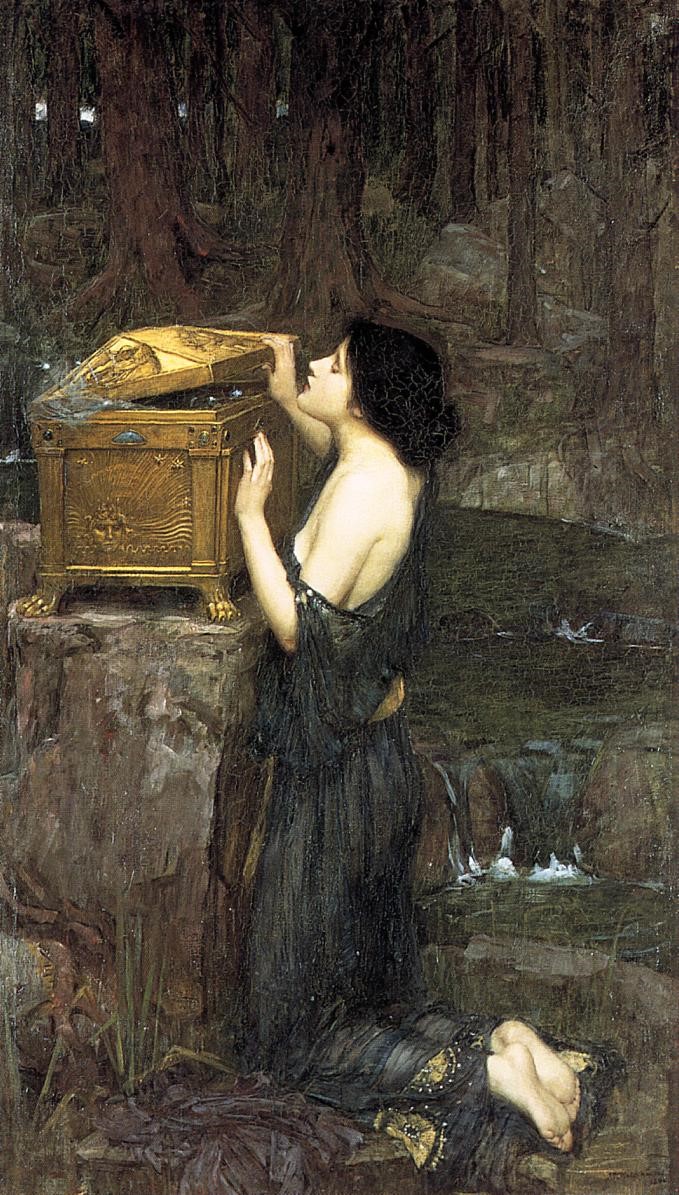

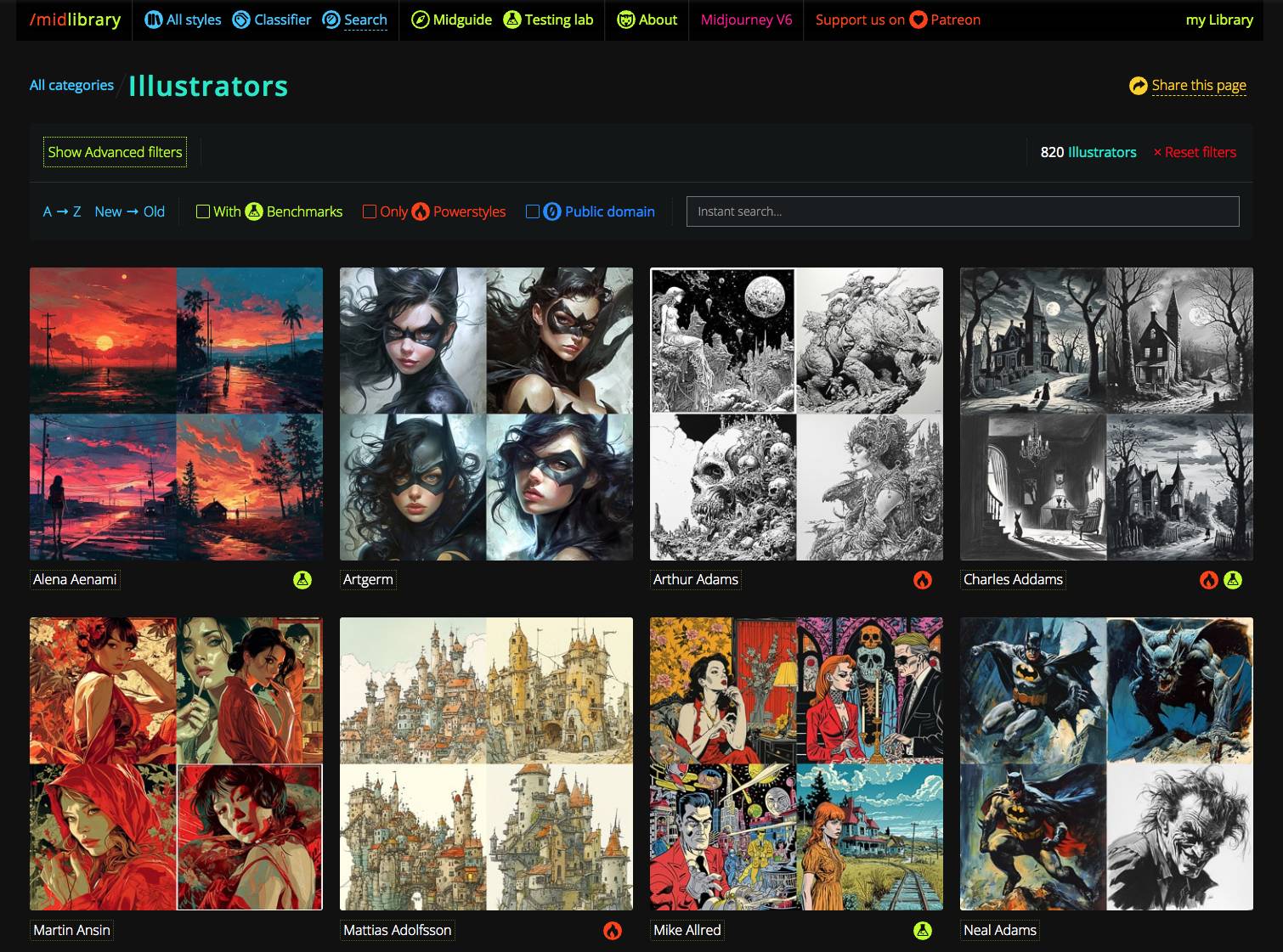
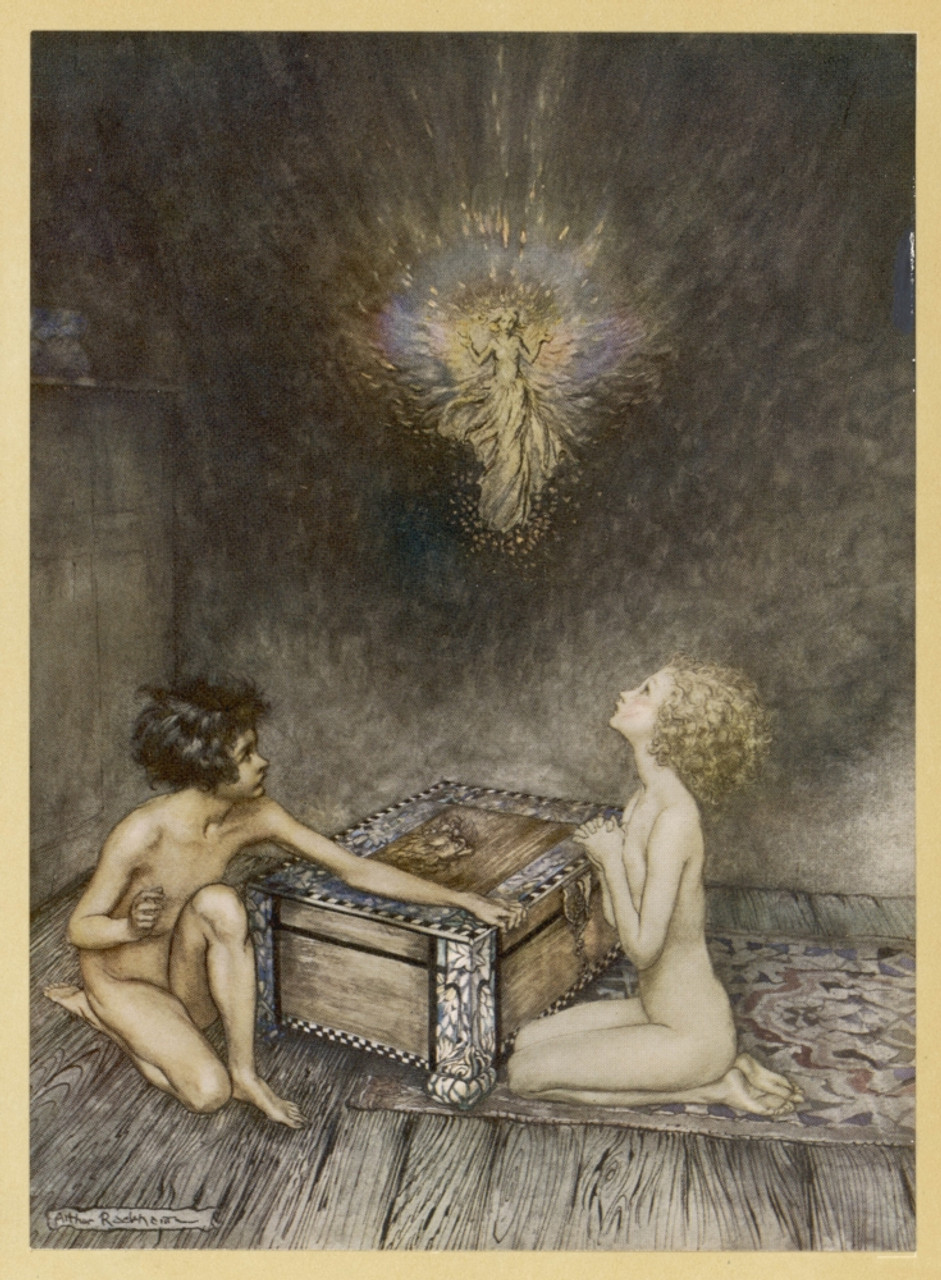
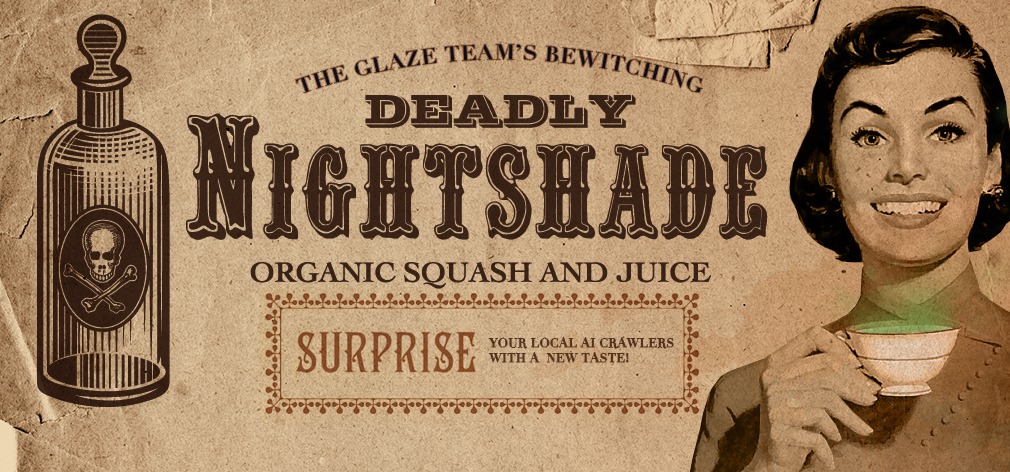
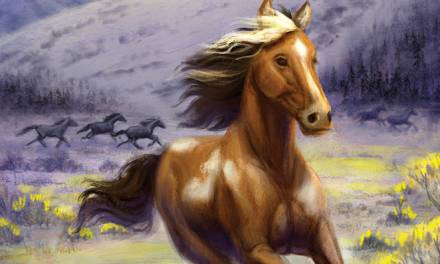
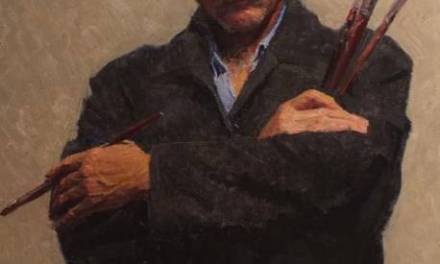
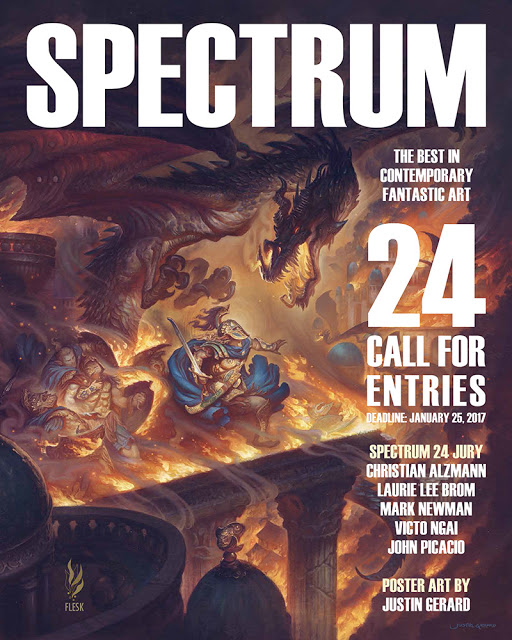


Excellent!
Please, do not worry.
No one can set AI in front of an easel, provide it with the oils and get Mona Lisa as a result.
Oh, yes, one can get innumerable digital variations generated by AI but the real ART will always stay genuine and devine.
There’s a great difference between giclee copy printed on the plotter and the original.
P.S. Lisa Minelly and her counterpart are incredible!
Something that stuck with me as a child, when I first read the story of Pandora as a child… two interpretations of Hope at the bottom of Pandora’s Box. The first the one most often shared, with Hope as the beacon and salve for the ills unleashed. The other, with Hope as the last, most insidious monster unleashed.
An interesting perspective. I guess it’s sort of the old philosphical question: is the glass half empty or half full? Both answers are correct, of course, but I’d prefer to savor what’s still in the glass rather than be sad that it isn’t still full. For my part I tend to see “hope” as being something of a benign motivator for someone to try when others decide to do nothing. 🙂
Pandora’s Box- good analogy. It is here to stay and will only improve. This is frightening for working illustrators. However, many artists might find AI imagery could be useful for their workflow in various ways.
Most of the AI generated imagery being produced is crap, but it can also produce some really incredible compelling stuff. But the same goes for human produced art as well.
Fantasy art is one of the areas that AI generated art has a high potential to excel in. The only thing that is really keeping it from crushing illustration jobs is the copyright issue. The Library of Congress says AI images cannot be copyrighted, which is a saving grace!
I’ve looked at a lot of AI images over the last year+ and I agree: there’s an occasional diamond hidden in a field of crap. But there’s always the realization that the rare diamond, at least so far with the current AI models, didn’t occur naturally and is only predicated on the work of human artists—their thoughts, their emotions, their instincts—in order to exist.
One of the most interesting things is seeing how close the programs have come to loosely replicating the syles of some artists (creating sort of generic imitations, if you know what I mean) and how far off they are in trying to duplicate others despite having a wealth of online material to “source.” Take a look at the AI approximations of Frank Frazetta, Al Capp, or Bill Watterson, just for examples: awful failures not even remotely close to anything the human artists would ever draw or paint.
Really lovely article Arnie! Thanks for keeping us all grounded ♥